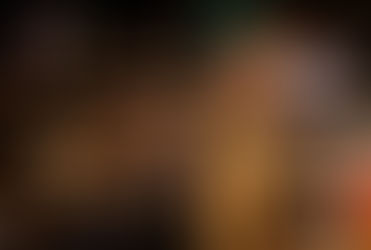Giselle
- Chris ORourke
- Apr 23, 2017
- 4 min read

****
A 21st century ‘Giselle’
One of the greatest ballets of all time, “Giselle,” first performed in 1841, carries with it the weight of tradition, with the legendary Marius Petipa’s choreography still informing many of today's productions. Yet, over the years, this most traditional of ballets has seen both its music and choreography undergo both subtle and significant changes. Ballet Ireland, in collaboration with choreographer, Ludovic Ondiviela, have decided it’s time for yet another change, and have taken it upon themselves to not so much revive, as reimagine “Giselle” for the 21st century. The changes certainly aren’t subtle, with libretto, choreography and music being significantly altered. In a production that honours tradition without ever being restrained by it, Ballet Ireland’s “Giselle” embraces the contemporary and is all the better for doing so. Brave and breathtakingly beautiful at times, Ballet Ireland’s “Giselle” borders on the sublime.

Under Ondiviela’s direction, “Giselle’s” original libretto undergoes some significant alterations. The “poor girl done wrong by a rich boy” narrative, which dominates the original first act, is essentially intact, but now with an added twist or two. Giselle, loved by Hilarion, but in love with Albrecht, dies when Albrecht chooses his betrothed, Bathilde, over her. Yet this original first act is reduced to a matter of mere minutes in this revised production. Instead, following Giselle’s death very early on, the central action of Act One now revolves around a new twist as “Giselle” becomes a modern whodunnit, replete with police, investigations and interrogations, with Giselle's death often revisited in flashback. One direct downside of this is it risks Giselle becoming little more than a first act narrative device, yet a simultaneous plus is its foregrounding and exploring of other characters. The second act sees a return to tradition as the ghostly Giselle, surrounded by the vengeful Wilis spirits, tries to protect Albrecht from their punishing hatred. A visual sensibility marries both the contemporary with the traditional in a very 21st century context, informed by a healthy amount of Neo-Gothic

Throughout, Ondiviela’s often exquisite choreography shifts focus from situation to substance, with narrative action becoming secondary to the emotions and experiences directly encountered by “Giselle’s” characters. Structurally, some choices can be a little confusing, or challenging, such as the extensive reduction of Giselle’s presence in Act One, and the opening to Act Two, whose sole purpose seems to be to foreshadow, unnecessarily, what is to come. Yet, when it all comes together, Ondiviela’s choreography is utterly sublime. The wonderfully woven interplay during the dance of the Wilis, for example, is breathtakingly brilliant. Here, group sequences craft a pulsating, undulating motion, part wave, part heartbeat, an irresistible undertow designed to pull Albrecht to his doom. All of which is exquisitely executed, with traditional en pointe sequences seeming to find a new, expressive freedom.
Tradition and innovation also inform an exquisite musical score, in which Adolphe Adams' original music is married to an extraordinary sound design and composition by Tom Lane and Rob Moloney. Crafting something steeped in tradition while sounding fresh and contemporary, Lane and Moloney set the bar impossibly high with a score both instantly recognisable and utterly new. From its radio tuned links to the past, to its almost Max Richter like use of spoken word and street sounds, Lane and Moloney’s score is practically flawless. Maree Kearns’ simple, yet powerful design, informed by a wonderful lighting design by Paul Keogan, is deeply evocative, highlighting the emotional and imaginative landscape “Giselle” inhabits.

If opening night lead, Ryoko Yagyu as Giselle, seemed less comfortable with the mimed opening sequence, playing it a little too large at times, that might have to do with the fact that dancing is more her natural medium, at which she is outstanding. An opening night malfunction also showed her as a consummate professional who took a moment that might have gone astray and worked it into the fabric of “Giselle” so brilliantly, it should be retained as one of those happy accidents that result in something unexpected that enriches and informs the performance. Rodolfo Saraiva’s technically excellent Albrecht, was also strong, but a Patrick Swayze hair and costume design left a little to be desired, compromising visually an otherwise strong performance. Ana Enriquez-Gonzalez as Bathilde was a revelation, as was Mark Samaras as Hilarion, with both technically brilliant and utterly expressive, whether inhabiting the physical first act or the ghostly second. Throughout, dancers Nahia Gil, Emma Hancox, Arianna Marchiori, Sayako Tomiyoshi, Jasper Arran, Cian Hughes, Matthew Petty and Patrick Ryan were also amazingly strong. If footwork and synchronisation were a tad untidy on the rare ocassion, that might well have had more to do with opening night nerves, not helped by an almost twenty-minute delay before starting. Respectfully, patrons and late arrivals need to be mindful that opening nights are about the dancers, not about them.
If you care to debate the point, Ballet Ireland’s “Giselle,” with its mix of innovation and tradition, might play well with some, and not so well with others. If it risks alienating both the traditionalists and those seeking innovation by going too far, or not far enough, it also risks delighting them by breaking fresh ground. For those unconcerned with such things, preferring to engage with dance rather than debate, Ballet Ireland's “Giselle” is an absolute joy. This is “Giselle” made accessible for “The Walking Dead” generation, and under Ondiviela’s exquisite choreography, it is modern, moving, magical and memorable. And most certainly not to be missed.
“Giselle” by Ballet Ireland, with choreography by Ludovic Ondiviela, runs at The Project Arts Centre until April 29th before going on national tour.
For more information, please visit The Project Arts Centre or Ballet Ireland





















